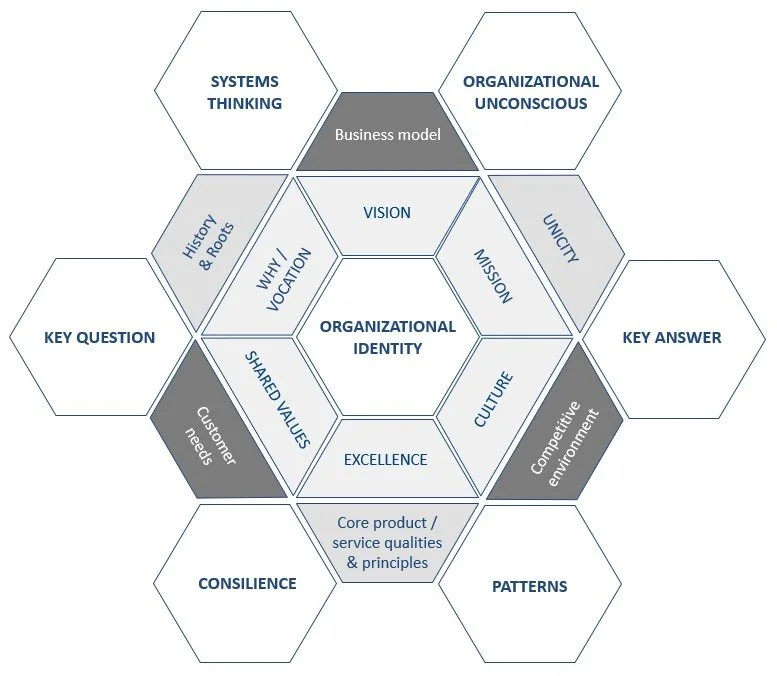
The art and science of organizational identity
History
Since the late 80s, as highlighted in the work of Albert and Whetten, an inseparable link has been recognized between an organization’s identity, its way of operating, and its performance.
The performance and achievement of your company’s objectives largely depends on the behavior of your employees. In turn, this behavior is directly influenced by the strength and level of identification employees have with the organizational identity. Over time, the identification with the organizational identity can erode for all sorts of reasons.
What is organizational identity?
It is both an art and a science that has its roots in interdisciplinary fields such as sociology, social psychology, anthropology, strategic management and organizational communication.
Organizational identity answers the question, ‘who are we as an organisation’?
It focuses on:
What is core to the organization (the attributes that have forged the history of the company).
What is unique and distinctive.
What endures over time despite ongoing changes.
Our approach to organizational identity rests on four pillars:
1 - The need to embrace complexity
«The art of simplicity is a puzzle of complexity.»
— Douglas Horton
An organization's identity can only be understood by embracing the complexity of the system it represents, rather than trying to simplify it.
Systems thinking provides a disciplined approach to understanding the relationships and patterns of a system. It transforms the reductive linear mindset into a non-linear, all-encompassing way of seeing things that makes organizations more agile and responsive to change, helping them to turn challenges into opportunities.
2 - The power of your organizational unconscious
To transform, an organization must first change its perception of itself. To do this, you need to bring to the surface those things that operate beyond the conscious control of the organization and that are not directly visible: components of culture (rituals, ceremonies, beliefs), unconscious strategies, presuppositions and shared values.
«What is necessary to change a person, is to change his awareness of himself.»
— Abraham Maslow
3 - Creating the conditions for excellence to unfold
There is some form of excellence in every organization, but its source is rarely fully understood, nor is its potential fully realized.
Our role is not only to identify this excellence but also to understand the conditions necessary for it to unfold and express itself.
«Excellence is doing ordinary things extraordinarily well.»
— John W. Gardner
4 - (Re)discovering your true vocation
«When a company really has a high reason for being, there is no more competition.»
— Frédéric Laloux
Too many companies miss their true potential by focusing on what they do rather than who they are. Over the course of our careers, we have found that the most successful companies are those that have anchored their activities in their true calling. In this way, a genuine sense of purpose and meaning can help drive your organization.
The organizational identity model
Feel free to contact us to discuss what Organizational Identity can do for your organization.
We will be happy to take you through the methodology in more detail.






